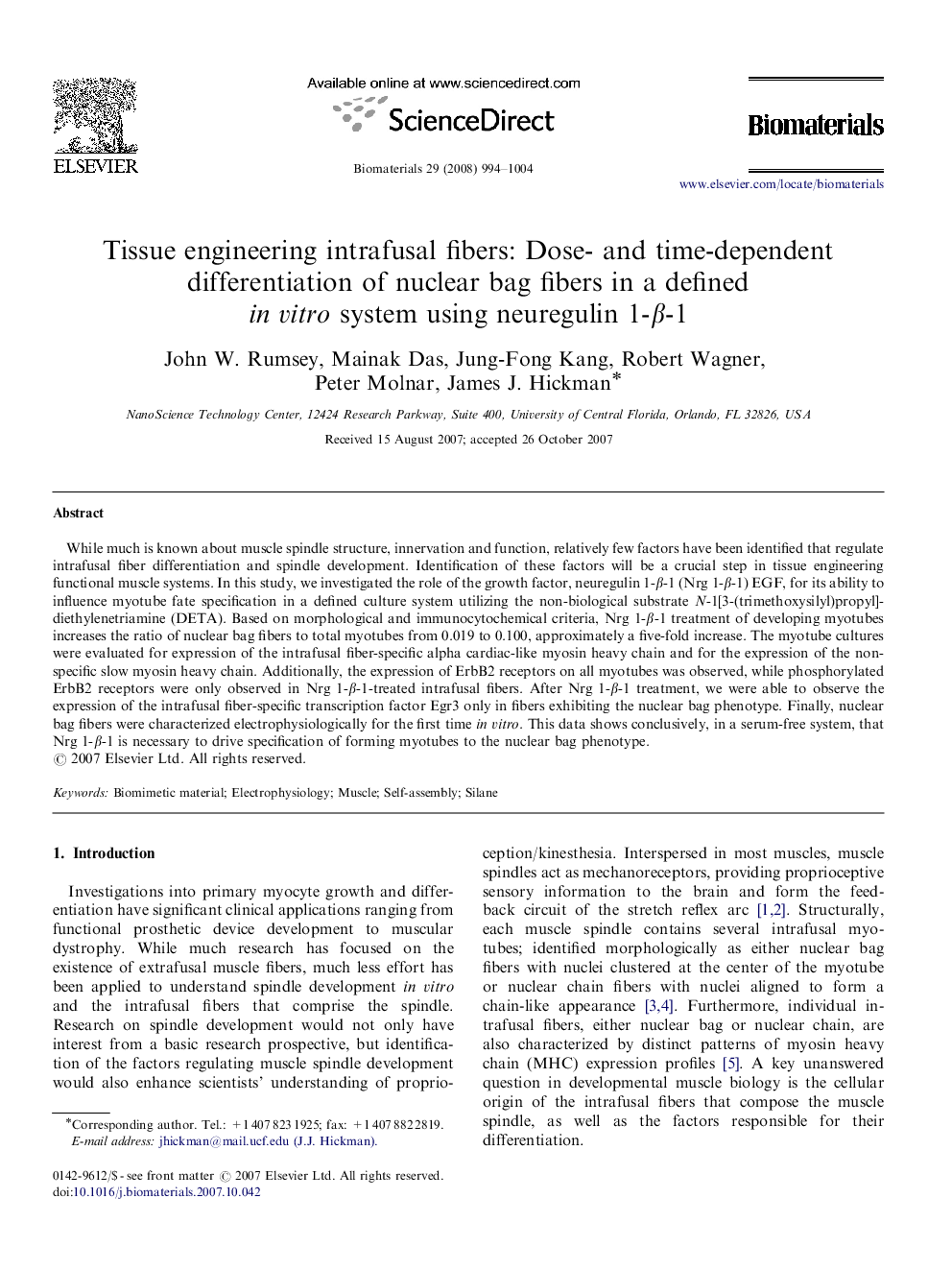| Article ID | Journal | Published Year | Pages | File Type |
|---|---|---|---|---|
| 11251 | Biomaterials | 2008 | 11 Pages |
While much is known about muscle spindle structure, innervation and function, relatively few factors have been identified that regulate intrafusal fiber differentiation and spindle development. Identification of these factors will be a crucial step in tissue engineering functional muscle systems. In this study, we investigated the role of the growth factor, neuregulin 1-β-1 (Nrg 1-β-1) EGF, for its ability to influence myotube fate specification in a defined culture system utilizing the non-biological substrate N-1[3-(trimethoxysilyl)propyl]-diethylenetriamine (DETA). Based on morphological and immunocytochemical criteria, Nrg 1-β-1 treatment of developing myotubes increases the ratio of nuclear bag fibers to total myotubes from 0.019 to 0.100, approximately a five-fold increase. The myotube cultures were evaluated for expression of the intrafusal fiber-specific alpha cardiac-like myosin heavy chain and for the expression of the non-specific slow myosin heavy chain. Additionally, the expression of ErbB2 receptors on all myotubes was observed, while phosphorylated ErbB2 receptors were only observed in Nrg 1-β-1-treated intrafusal fibers. After Nrg 1-β-1 treatment, we were able to observe the expression of the intrafusal fiber-specific transcription factor Egr3 only in fibers exhibiting the nuclear bag phenotype. Finally, nuclear bag fibers were characterized electrophysiologically for the first time in vitro. This data shows conclusively, in a serum-free system, that Nrg 1-β-1 is necessary to drive specification of forming myotubes to the nuclear bag phenotype.
